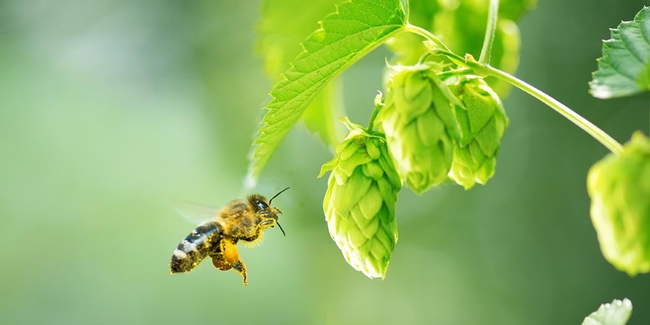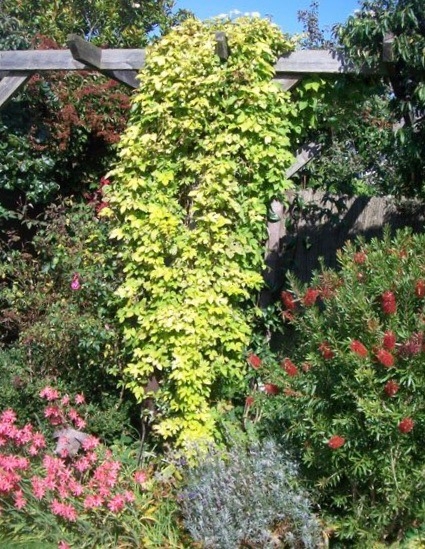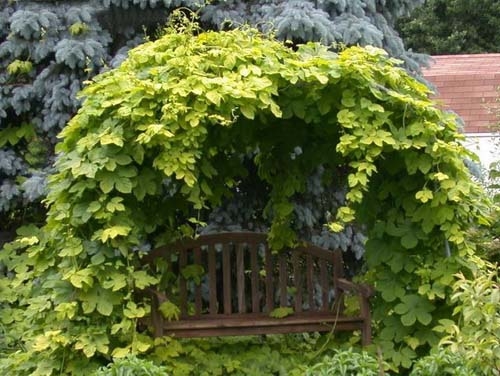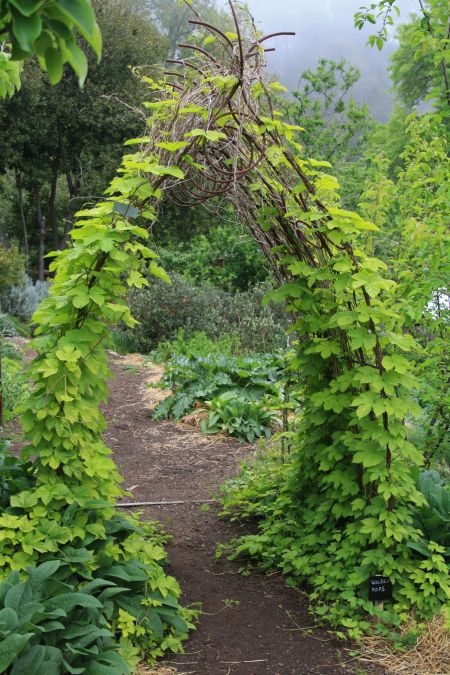There are many reasons to cultivate a vertical garden: small spaces, implementing aesthetic visuals, creating noise barriers or living fences, and even blocking a nosey neighbor. The decision to install plants that want to climb is relatively simple. The bigger question is what plant will fulfill the needs of the garden and, in so doing, please the gardener.
If rapid vertical growth is needed and planting is happening well into June, consider obtaining Humulus lupulus (aka Hop plant). There are five varieties of hop grown around the world, three of which are native to North America. Western hop, H. l. var. neomexicanus, enjoys full sun all day and requires moderate waterfall. Both male and female plants are wind pollinated and separately produce flowers, though bees and butterflies enjoy the strobili or cone of the female plant exclusively. It is this strobili or flower which is commonly referred to as “hops.”
Interestingly, hop plants are considered by many to be a vine due to their stiff, downward facing hairs which provide stability and, in turn, allows them to easily climb to heights of 15 to 20 feet in a relatively short period of time. While they will die back to a cold-hardy rhizome during late Autumn, hop is a perennial herbaceous plant that has been known to live upwards of 20 years.
The yellow leafed cultivar Aureus or “golden” hop has been recognized by the Royal Horticultural Society and is widely cultivated for garden use. It is capable of providing a lush cascade of bright golden leaves either as a focal point or simply intertwined with standard green varieties. As the hop will reduce as winter approaches, allowing a climbing vine such as the clematis to share its trellis or lattice will allow the flowering vine to take center stage during colder months.
Keep in mind that the hop is an aggressive growing plant and has the tendency to smother other plants absent consistent pruning; thus, any companion plants should be installed about a foot away. Companion plants should be selected to play a specific role according to their individual characteristics. For example, chives and coriander both seem to keep aphids away from cones and new shoots, while marigolds attract beneficial insects, such as bees, and repel cucumber beetles. Anise has a pungent scent that deters many different pests and, simultaneously, acts as a host for predatory wasps which eat sap sucking aphids. Finally, yarrow increases the vigor of nearby plants, is an excellent fertilizer when composted, and attracts lady beetles and beneficial wasps.
Cultivating hop plants requires some planning. The rhizome does best installed about four inches into aerated, well-drained, rich soil. It must be planted horizontally with any visible buds pointing upward. If planting multiples be careful to space them according to your growing plan, i.e., twining requires closer spacing versus as separately individual plants at two feet apart. After installation, cover with lightly packed soil or high nitrogen mulch. Again, be certain you are planting in full sun.
There is no single form of vertical support that is beloved by the hop. Choices include wooden lattice, a garden arch, vertical wood posts with interior wire framework, available pergola column space, or even an old clothesline. The options available are infinite if one considers the requirement of a well-anchored vertical support and that the vines require something to latch onto.
Finally, to train hop plants, trim them once they attain around a foot of growth. At this point, begin training according to the end goal. If done by hand, gently weave the vines around the chosen support system in a clockwise formation to avoid having the hops just fall off. After two months of growth, trim off all the lower leaves to avoid anything damaging being picked up from the soil. Hop may be trained to grow up and cascade over a pergola or gate, though diligence and attention are required. They are a beautiful, if unexpected, addition to any climbing garden.



